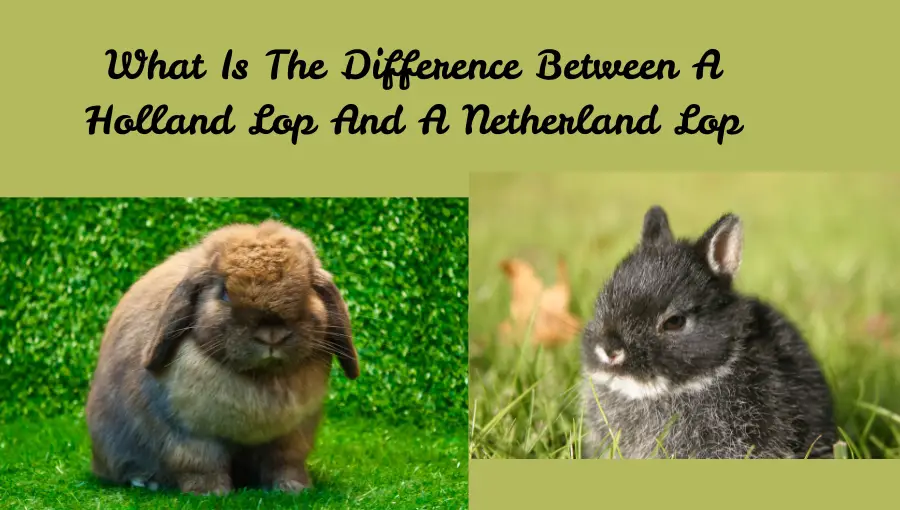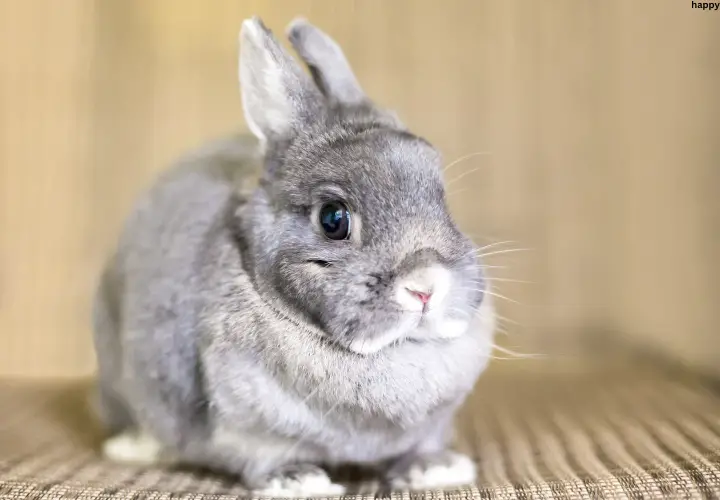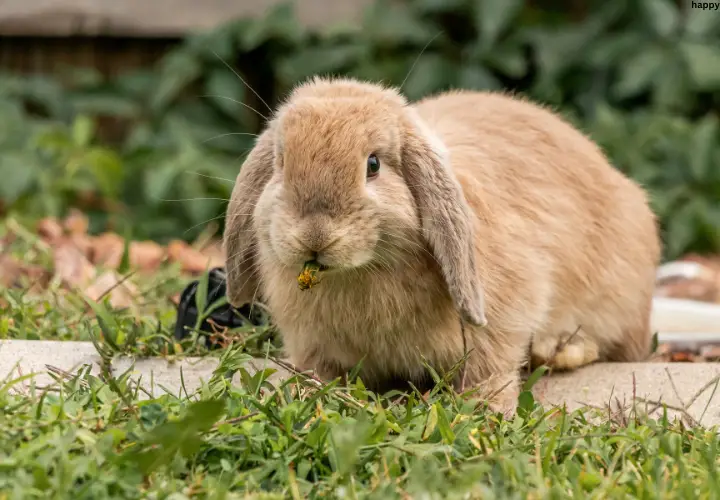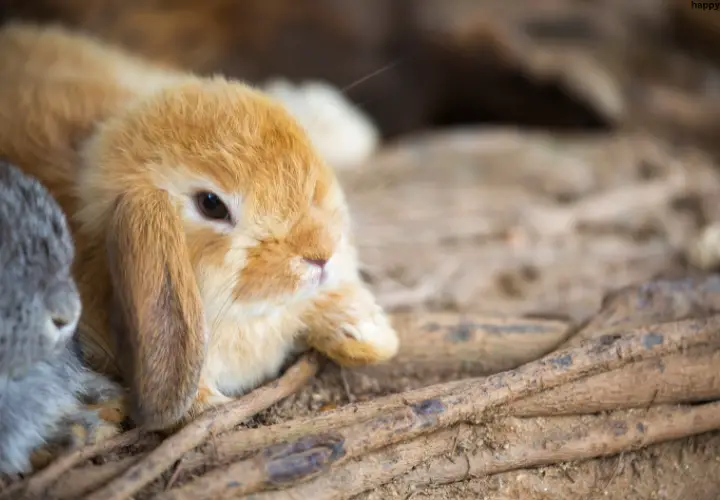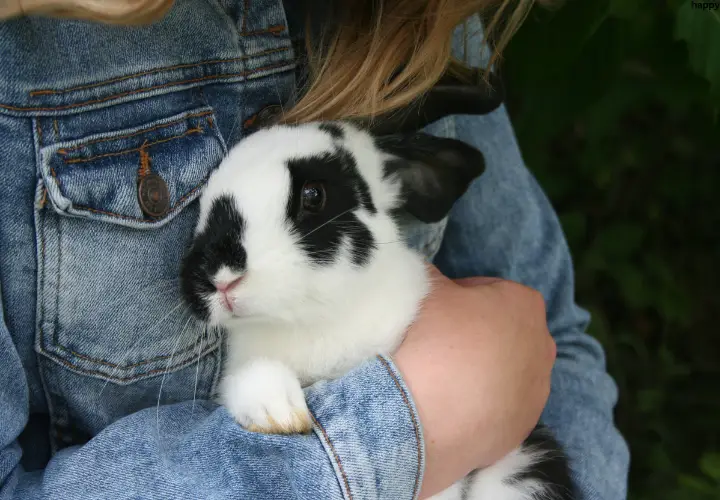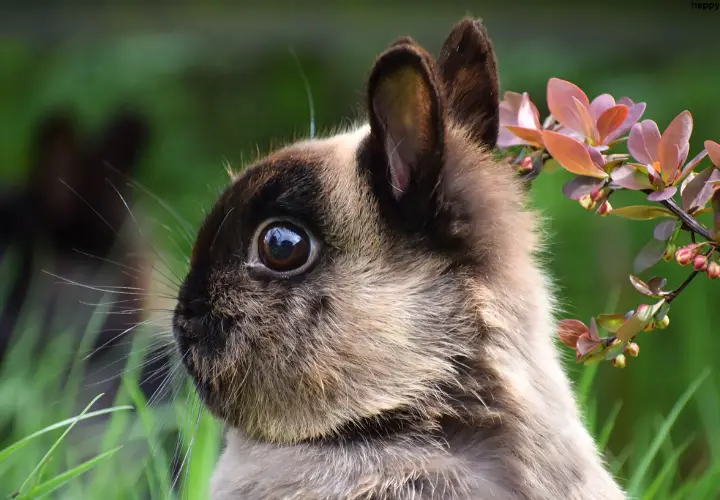What Is The Difference Between A Holland Lop And A Netherland Lop
The key differences between a Holland Lop and a Netherland Lop are their size and body structure, with Holland Lops being typically larger and more muscular, and their ear characteristics, with Holland Lops having shorter, wider ears that hang closer to the cheeks compared to the longer, more slender ears of Netherland Lops.
When exploring the world of compact rabbit breeds, two adorable varieties often capture the hearts of pet enthusiasts: the Holland Lop and the Netherland Lop.
While these breeds might seem similar at first glance, several distinctive physical characteristics set them apart.
Understanding these differences is crucial for potential rabbit owners to make informed decisions about which breed might best suit their preferences and living situations.
Key Takeaways:
| Characteristic | Holland Lop | Netherland Lop |
|---|---|---|
| Size and Body Structure | Typically 2-4 lbs, more compact and muscular | Typically 1.5-2.5 lbs, more delicate and streamlined |
| Ear Characteristics | Shorter, wider ears that hang close to the cheeks | Longer, more slender ears that extend slightly further from the head |
| Coat Texture and Density | Denser, plushier fur with a shorter, more uniform texture | Slightly less dense coat with a smoother, sleeker texture |
| Facial Features | Rounder, more compact face with fuller cheeks | Slightly more refined facial structure with more delicate and angular features |
1. Holland Lop versus Netherland Lop: Key Physical Differences
Size and Body Structure
The Holland Lop typically weighs between 2-4 pounds, presenting a more compact and muscular build. Their body appears shorter and more rounded compared to other lop breeds
. In contrast, the Netherland Lop tends to be slightly smaller, usually weighing around 1.5-2.5 pounds, with a more delicate and streamlined body structure.
Ear Characteristics
One of the most striking differences between these two breeds lies in their ears. Holland Lops feature distinctively shorter, wider ears that hang close to the cheeks, creating an adorable, compact appearance.
Netherland Lops, however, boast longer and more slender ears that typically extend slightly further from the head, giving them a more elongated facial profile.
Coat Texture and Density
Holland Lops are known for their dense, plush fur that feels incredibly soft to the touch. Their coat tends to be shorter and more uniform, providing a smooth, velvety appearance. Netherland Lops typically have a slightly less dense coat, with a smoother and potentially more sleek texture that lies closer to their body.
Color Variations
Both breeds offer an impressive range of color possibilities, but their genetic color patterns differ slightly. Holland Lops often display more diverse and vibrant color combinations, including solid, broken, and shaded variations. Netherland Lops tend to have more subtle and refined color patterns, with less dramatic color distributions.
Facial Features
The facial structure represents another key distinction between these two breeds. Holland Lops typically have a rounder, more compact face with fuller cheeks, creating an almost teddy bear-like appearance.
Netherland Lops feature a slightly more refined facial structure, with more delicate and angular features that give them a more elegant look.
Head Shape Distinctions
- Holland Lop: Broader, more rounded head with a distinctly compact profile
- Netherland Lop: Narrower head with more refined, slightly elongated characteristics
Genetic Considerations
The physical differences between these breeds stem from careful selective breeding. Holland Lops were developed to create a more compact, dwarf-like rabbit with distinctive features, while Netherland Lops were bred to emphasize a more delicate and refined appearance.
Muscle Definition
Holland Lops typically display more muscular development, with a robust and sturdy build that reflects their breeding history. Netherland Lops tend to have a more slender and less muscular physique, appearing more graceful and lightweight.
Weight Distribution
The weight distribution differs subtly between these breeds. Holland Lops have a more even weight distribution across their compact body, while Netherland Lops tend to have a more proportional and balanced weight spread that emphasizes their more delicate frame.
Overall Breed Characteristics
Understanding these physical differences helps potential rabbit owners make informed decisions about which breed might best suit their preferences and living situations. Both the Holland Lop and Netherland Lop offer unique charm and distinctive physical traits that make them beloved among rabbit enthusiasts.
2. Breed Origins and Developmental History
Rabbits have fascinating lineages that often intertwine, and the Holland Lop and Netherland Dwarf breeds showcase remarkable developmental journeys. The story of these adorable bunnies begins in the mid-20th century, rooted in careful selective breeding and genetic refinement.
The Holland Lop emerged as a distinct breed through the dedicated work of Adrian de Cock from the Netherlands during the 1950s.
His vision was to create a smaller version of the French Lop, incorporating genetic traits from Netherland Dwarf rabbits to reduce size while maintaining distinctive physical characteristics.
By strategically crossbreeding French Lops with Netherland Dwarfs, de Cock successfully developed a compact rabbit with the signature drooping ears that would become the Holland Lop’s trademark.
Genetic manipulation played a crucial role in the Holland Lop’s development. Breeders focused on specific traits like:
• Compact body structure
• Shorter ear length
• Muscular build
• Distinctive head shape
• Varied coat colors
The Netherland Dwarf, in contrast, has an earlier origin story dating back to the early 1900s in Europe. Originating from standard-sized rabbits, breeders in the Netherlands sought to create progressively smaller rabbit varieties.
The initial breeding programs focused on dramatically reducing rabbit size while maintaining robust health and genetic diversity.
Pioneering rabbit geneticists identified specific genetic markers that would allow consistent miniaturization without compromising the animal’s overall health. These early efforts resulted in the Netherland Dwarf becoming one of the smallest recognized rabbit breeds globally.
Interestingly, both breeds share some common genetic foundations, particularly through the Netherland Dwarf’s involvement in the Holland Lop’s development. This genetic interplay highlights the intricate world of selective breeding and how intentional crossbreeding can create entirely new rabbit varieties.
Throughout the mid-20th century, both breeds underwent rigorous standard refinement. Breeding associations in Europe and North America established strict guidelines to ensure consistent breed characteristics. These standards considered not just physical appearance but also temperament, genetic health, and reproductive capabilities.
The Holland Lop gained official recognition from the American Rabbit Breeders Association (ARBA) in 1979, marking a significant milestone in its developmental history.
This recognition validated the breed’s distinct characteristics and established breeding standards that continue to guide enthusiasts and professional breeders.
Genetic diversity remained a critical consideration during these developmental phases. Breeders carefully managed bloodlines to prevent inbreeding and maintain robust genetic pools. This approach ensured that both the Holland Lop and Netherland Dwarf maintained healthy population dynamics while preserving their unique breed characteristics.
Color variations emerged as another fascinating aspect of their developmental journey. Initially limited to a few standard colors, selective breeding expanded the palette to include numerous coat patterns and hues.
Today, both breeds showcase an impressive array of color combinations that continue to captivate rabbit enthusiasts worldwide.
Modern breeding practices have further refined these breeds, focusing on:
• Enhanced genetic health
• Improved temperament
• Consistent physical standards
• Broader color spectrum
• Adaptability to various environments
The evolutionary paths of the Holland Lop and Netherland Dwarf represent more than just rabbit breeding—they symbolize human creativity in animal husbandry, demonstrating how strategic genetic selection can transform and create entirely new animal varieties.
These breeds now populate households globally, cherished as beloved pets that embody decades of careful genetic refinement and passionate breeding dedication.
3. Temperament and Personality Characteristics
When comparing Holland Lops and Netherland Dwarf Lops, their temperament and personality characteristics reveal fascinating differences that potential rabbit owners should understand. Both breeds share adorable qualities, but each has unique traits that set them apart in the world of small rabbit companions.
Personality Traits of Holland Lops
Holland Lops are renowned for their exceptionally friendly and social nature. These compact rabbits typically demonstrate a calm and gentle disposition, making them ideal for families with children or first-time rabbit owners.
Their playful personality shines through in their interactions, often showing a remarkable ability to bond closely with their human companions. They tend to be more laid-back and enjoy gentle handling, which makes them particularly appealing as indoor pets.
Social Interaction Characteristics
These rabbits typically display:
• High tolerance for human interaction
• Moderate energy levels
• Consistent desire for attention
• Relatively low-stress temperament
Netherland Dwarf Lop Personality Dynamics
In contrast, Netherland Dwarf Lops tend to have a more spirited and sometimes more independent personality.
They are often more energetic and can be slightly more challenging to handle compared to their Holland Lop counterparts. Their smaller size contributes to a more dynamic and sometimes feisty demeanor, which can make them exciting but potentially more demanding pets.
Behavioral Nuances
Netherland Dwarf Lops typically exhibit:
• Higher energy levels
• More independent nature
• Quick and agile movements
• Greater potential for occasional skittishness
Individual Variation Factors
It’s crucial to understand that individual rabbit personalities can vary significantly within each breed. Factors such as early socialization, handling, and individual genetic predispositions play substantial roles in determining a rabbit’s specific temperament.
Early positive interactions and consistent, gentle handling can dramatically influence how a rabbit develops its personality traits.
Socialization Impact
Proper socialization techniques can help mitigate potential behavioral challenges in both Holland and Netherland Dwarf Lops. Consistent, patient interactions during early developmental stages can transform a potentially nervous rabbit into a confident and affectionate companion.
Compatibility Considerations
When considering which breed might be more suitable, potential owners should evaluate their lifestyle and interaction preferences. Holland Lops might be preferable for families seeking a more relaxed and predictable companion, while Netherland Dwarf Lops could appeal to owners wanting a more energetic and playful pet.
Environmental Adaptation
Both breeds demonstrate remarkable adaptability to indoor environments, but their individual personality traits influence how they respond to different living situations.
Holland Lops tend to be more adaptable and less reactive to environmental changes, whereas Netherland Dwarf Lops might require more structured and consistent environments.
Interaction Recommendations
Regardless of breed, successful rabbit ownership requires:
• Patient and gentle handling
• Consistent positive interactions
• Understanding individual personality nuances
• Respect for the rabbit’s personal space
• Regular socialization opportunities
While Holland Lops and Netherland Dwarf Lops share the adorable “lop” characteristic of drooping ears, their personality differences make each breed uniquely charming
. Potential rabbit owners should spend time interacting with individual rabbits to truly understand their specific temperament, recognizing that breed characteristics provide general guidelines rather than absolute predictors of personality.
Ultimately, both breeds offer delightful companionship, with their distinct personality characteristics providing different but equally rewarding experiences for rabbit enthusiasts.
4. Care Requirements and Maintenance Needs
Daily Nutrition and Feeding Strategies
Holland Lops and Netherland Lops share similar dietary foundations, but their nutritional needs can vary slightly based on age and activity levels. Owners should prioritize high-quality hay as the primary diet component, which supports digestive health and dental wear. A balanced diet typically includes:
- Fresh timothy hay (70-80% of daily diet)
- Limited high-quality pellets
- Small portions of fresh vegetables
- Constant access to clean, fresh water
Housing and Environmental Considerations
Both rabbit breeds require spacious, secure enclosures that protect them from predators and environmental stressors. Indoor housing is recommended, with temperatures maintained between 60-70 degrees Fahrenheit. Ideal living spaces should include:
- Minimum 4 square feet of living space
- Soft bedding materials
- Protection from direct sunlight
- Quiet, low-traffic areas
Exercise and Mental Stimulation
Regular exercise is essential for maintaining physical and mental health in both Holland and Netherland Lops. These compact breeds require structured playtime and enrichment activities to prevent boredom and potential behavioral issues. Recommended exercise strategies include:
- Daily supervised exploration outside their primary enclosure
- Interactive toys that encourage natural behaviors
- Supervised floor time in rabbit-proofed spaces
- Rotating toys to maintain engagement
Grooming and Hygiene Protocols
While both breeds have compact, dense fur, their grooming requirements differ slightly. Holland Lops typically have shorter coats requiring weekly brushing, whereas Netherland Lops might need more frequent grooming. Essential grooming practices include:
- Weekly brushing to remove loose fur
- Nail trimming every 4-6 weeks
- Periodic ear cleaning
- Monitoring for any skin irritations or matted fur
Health Monitoring and Preventative Care
Proactive healthcare is fundamental for maintaining the longevity and quality of life for these delicate rabbit breeds. Regular veterinary check-ups, focusing on specialized exotic pet care, help identify potential health concerns early. Critical health monitoring aspects include:
- Annual comprehensive veterinary examinations
- Tracking weight and body condition
- Monitoring dental health
- Watching for signs of respiratory or digestive issues
Socialization and Emotional Well-being
Both Holland and Netherland Lops are social creatures that thrive on interaction and gentle handling. Their emotional well-being depends on consistent, patient engagement. Effective socialization strategies involve:
- Daily gentle handling
- Consistent, calm interactions
- Positive reinforcement techniques
- Gradual introduction to new environments
Understanding and implementing these comprehensive care requirements ensures that Holland and Netherland Lops receive the specialized attention they deserve.
By prioritizing nutrition, housing, exercise, grooming, healthcare, and emotional support, owners can create a nurturing environment that promotes their rabbit’s overall health and happiness.
5. Selecting the Right Rabbit Breed for Your Home
When bringing a furry companion into your home, choosing the right rabbit breed requires careful consideration. Each breed offers unique characteristics that can significantly impact your pet ownership experience.
Understanding the specific traits, temperament, and care requirements helps ensure a perfect match for your lifestyle and living space.
Factors to Consider Before Adopting
Before selecting a rabbit, prospective owners should evaluate several critical aspects:
• Space availability in your home
• Your daily schedule and interaction time
• Potential allergies
• Budget for ongoing care
• Living environment (indoor vs. outdoor)
Size and Living Space Requirements
Different rabbit breeds have varying space needs. Smaller breeds like Netherland Dwarfs require less room, making them ideal for apartments or compact living areas. Larger breeds such as Flemish Giants need more expansive environments to move and exercise comfortably.
Temperament and Personality Traits
Rabbit personalities differ dramatically between breeds. Some are more social and enjoy frequent human interaction, while others prefer minimal handling. For families with children, breeds known for gentleness and patience are recommended.
Grooming and Maintenance
Each breed presents unique grooming challenges. Long-haired rabbits like Angora require extensive daily brushing, whereas short-haired breeds demand less frequent maintenance. Consider your willingness to invest time in coat care when selecting your pet.
Health Considerations
Certain rabbit breeds are predisposed to specific health conditions. Researching breed-specific medical tendencies helps anticipate potential veterinary expenses and care requirements. Purebred rabbits might have more genetic health risks compared to mixed-breed rabbits.
Lifespan Expectations
Rabbit lifespans vary by breed, typically ranging from 8-12 years. Smaller breeds often live longer than larger ones. Understanding this commitment ensures you’re prepared for a long-term animal companion.
Energy Levels and Exercise Needs
Active breeds require more mental and physical stimulation. Some rabbits need extensive playtime and environmental enrichment, while others are more sedentary. Matching a rabbit’s energy level with your lifestyle prevents potential behavioral issues.
Indoor vs. Outdoor Considerations
Some breeds adapt better to indoor living, whereas others tolerate outdoor environments more effectively. Climate, predator risks, and housing conditions play crucial roles in determining the most suitable living arrangement.
Cost of Ownership
Beyond initial adoption expenses, consider ongoing costs:
• High-quality nutrition
• Veterinary care
• Habitat supplies
• Potential breeding/spaying expenses
• Enrichment toys and accessories
Recommended Breeds for Different Lifestyles
• Apartment Dwellers: Netherland Dwarf, Mini Rex
• Families with Children: Holland Lop, Lionhead
• Active Individuals: Dutch, Mini Lop
• Seniors: Calm breeds like Himalayan, Polish
Responsible Adoption Practices
When selecting your rabbit, prioritize reputable breeders or rescue organizations. Ensure the animal receives proper medical screening, vaccinations, and early socialization. Meeting the rabbit beforehand allows assessment of individual personality and compatibility.
Bringing a rabbit home represents a significant commitment. Thorough research, understanding individual breed characteristics, and aligning the pet’s needs with your lifestyle guarantee a harmonious, rewarding relationship.
Take time to evaluate options, consult experts, and make an informed decision that benefits both you and your potential furry friend.
Conclusion
Both Holland Lops and Netherland Lops offer unique characteristics that make them delightful companion rabbits for potential owners. While they share some similarities, their distinct physical traits, origins, and temperaments set them apart.
The Holland Lop’s adorable compact size and distinctive ear structure make it a favorite among rabbit enthusiasts, whereas the Netherland Lop brings its own charm with slightly different physical attributes.
Choosing between these two breeds ultimately depends on individual lifestyle, living space, and personal preferences.
Potential rabbit owners should carefully consider factors such as available care time, living environment, and the specific personality traits that align best with their household dynamics.
Each breed requires dedicated attention, proper nutrition, regular veterinary care, and consistent social interaction.

